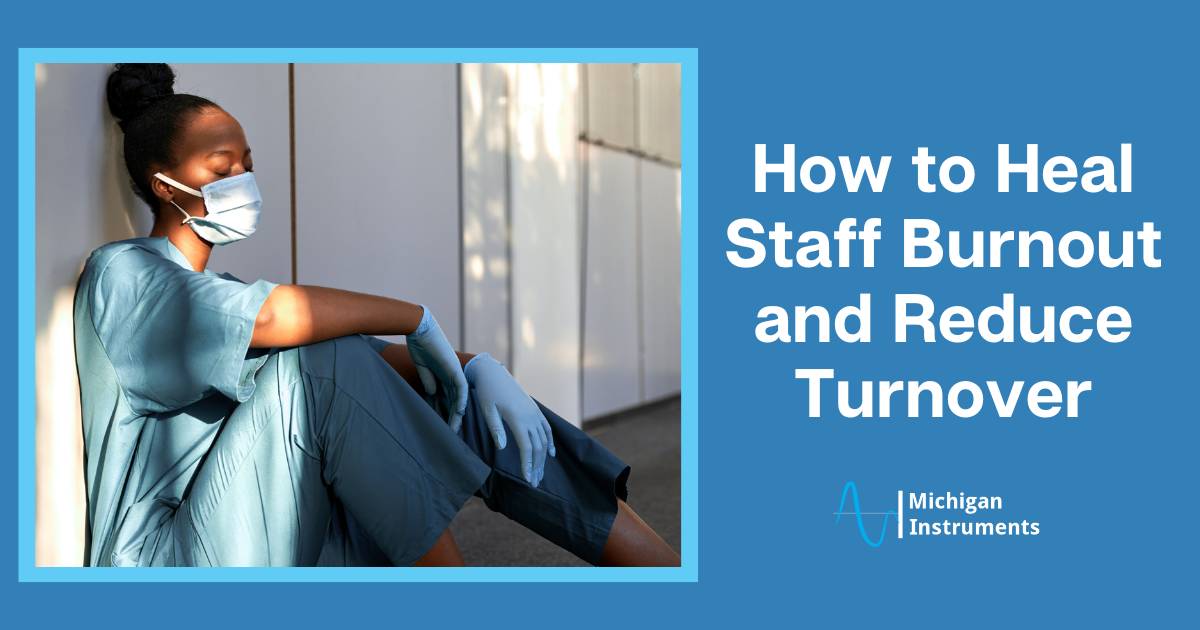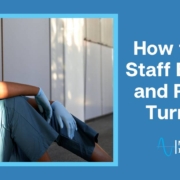
Did you know that 58% of physicians have feelings of burnout? Similarly, 54% of those physicians say it severely impacts their lives. These statistics alone show how important it is to reduce employee turnover in healthcare.
It’s no secret that medical staff burnout and shortages are a major issue, especially since the COVID-19 pandemic. In fact, a recent report shows that by 2025, the U.S. is estimated to have a shortage of approximately 95,000 nursing assistants, 98,700 medical and lab technologists and technicians, and more than 29,000 nurse practitioners.
However, with a few tactics and changes in rituals, it’s possible for hospitals to work towards fixing this problem—and even preventing it before it starts.
Below, we highlight some strategies to reduce burnout in your employees and prevent staff shortages.
How to Reduce Employee Turnover in Your Healthcare Facility
1. Understand What Causes Burnout
Before you can attempt to solve the issue of burnout in your staff, it’s important to understand the most common causes.
It could also be a combination of several factors. Causes include, but are not limited to:
- Inadequate support
- Excessive workloads
- Administrative burdens
- Scheduling problems
- Stress from being unable to provide the care patients need
- Family responsibilities
- Time pressure
You can begin to resolve most of these issues within the workplace. Therefore, you and your team should take some time to assess your scheduling and patient-care strategies to see where there’s room for improvement, such as what medical devices your facility uses.
2. Encourage (and Facilitate) Healthy Sleep Habits
A lot of stress that employees feel could be coming from a lack of healthy habits. Talk to them about making changes to their everyday routine; but more importantly, how you can help support them.
The CDC recommends at least 7 hours of sleep each night. However, for your healthcare staff, getting 7 hours every night is easier said than done. Since poor sleep habits can lead to increased stress, encourage sleep breaks during long shifts.
Facilitate this by making sure your on-call rooms promote healthy sleep environments, such as black-out curtains, white noise machines, and more.
3. Provide Mental Health Resources
Consider implementing a system that provides mental health support for your employees. This can be done in a number of ways.
For example, consider compiling a list of resources on your internal website or on a paper handout, including contact information for therapists, tips for combatting mental health issues from professional sources, group therapy session information, and more.
Don’t let them stress about the money—provide numbers for programs that will help them at no cost, or readjust your benefits so that it includes mental health assistance and RX insurance.
It may also be helpful to provide an in-house specialist for confidential meetings with your employees, if they feel that they need help, or don’t have the energy/time to schedule themselves.
4. Create a Healthy Work Environment
As a leader in your healthcare facility, there are tons of small things you can do that can make a huge difference. One way is to create a space where your employees can meditate, have some peace and quiet, make private phone calls, or even take a quick nap.
Another way is to foster an open environment where your staff feels comfortable enough to reach out about things that are bothering them. Maybe this is sending out quarterly surveys for employee feedback. This not only creates an opportunity to support them, but also to get honest feedback about aspects of your workplace to improve upon.
Lastly, don’t forget to acknowledge their hard work. Working in healthcare is a stressful and often thankless job. Remember to appreciate them and provide positive feedback to reassure them that even if they make mistakes, their work is valued.
Want to Reduce Employee Turnover in Your Healthcare Facility?
Did you know that Michigan Instrument’s automated CPR machines can lower exhaustion among your employees?
Our hands-free devices perform effective, customized CPR that never tires. They allow medical professionals to concentrate on other life-saving procedures and provide improved access to the patient. Additionally, they allow rescuers to safely position themselves to avoid personal injury.
For more information, contact us today!




